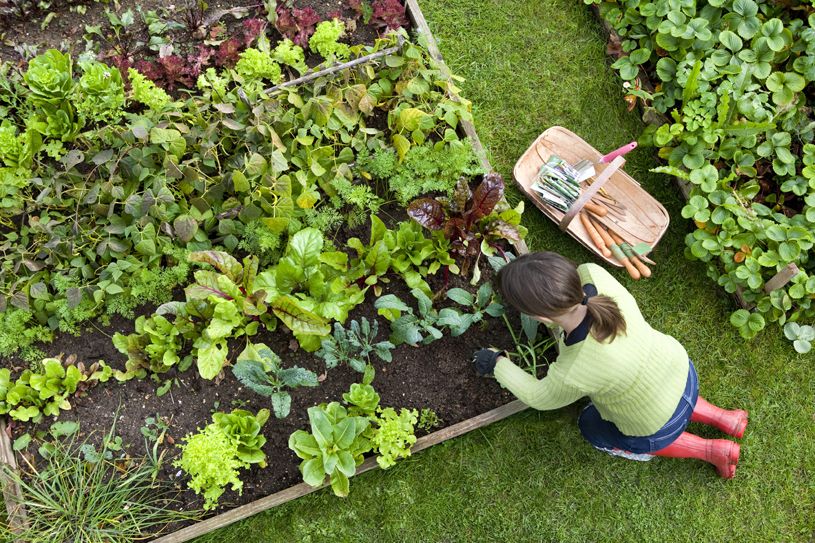Vegetable Gardening Basics for Beginners
New to gardening? Check out these vegetable gardening basics for beginners. Learning these skills and techniques will make your gardening experience far more pleasant—and rewarding to boot.
Planning the Garden Location
Choosing a location for your garden is the most important step in the garden planning process. Vegetables need at least 6-8 hours of sunlight for best growth. Leafy vegetables like spinach and lettuce will grow with less sunlight. Choose a location as far away as possible from trees and shrubs. The roots of nearby trees and shrubs will rob your vegetables of needed nutrients and water. Good soil with good drainage is needed. Whether sandy, loamy, or clay, amend the soil with compost. Be sure your water source is close by.
** Make sure there are no underground utility lines by calling Gopher State One Call 1-800-252-1166 before you dig.**
Keep a Garden Journal
Keep a journal of your activities in the garden. Keep a list of the varieties of vegetables grown. Record seeding and planting dates, insect and disease problems, weather and harvest dates and yields. This information will be valuable as you plan future gardens.
What To Grow
Don’t go overboard - grow what your family likes to eat. As a first time gardener, stay away from “exotic” veggies like kohlrabi or hard to grow veggies like cauliflower or head lettuce.
Grow hybrid vegetables. Hybrid vegetables are usually stronger and healthier than other vegetables. They often have higher yields. Many have a built-in disease resistance and they are indicating that they performed well under all types of conditions.
Draw a Plan
It is always a good idea to draw a plan of your garden. It doesn’t have to be a fancy diagram. Remember the tallest plants in your garden such as corn should be at the north end of the garden and permanent vegetables like asparagus should be at the side of the garden.
Containers
If you don’t have space in your backyard or only have access to a sunny balcony or patio, you can still grow vegetables in containers. A container for vegetables can be as simple as a bushel basket lined with plastic, a hanging basket or a self contained growing unit like the earthbox.
All containers, whether plastic or clay must have drainage. Soil in containers will dry out quickly, so frequent watering is necessary. Containers with no drainage will cause your vegetables to develop root rot.
Planning Techniques
Plan to use all the space in your garden. Through planting techniques like vertical cropping, succession planting and intercropping, you can make maximum use of the space you have.
Vertical Cropping
Train veggies like pole beans, peas, cucumbers, squash and gourds to some type of support to save space in the garden. Existing fences, poles, wire cages, trellises can be used for support.
Succession Planting
This technique involves growing a crop like lettuce in the spring and replacing it when the warm weather hits with a crop like beans. In the late summer, you can reverse the process and replace the beans with a cool season crop like lettuce or radishes.
Intercropping
Intercropping is the growing technique of planting fast growing vegetables among slow growing vegetables. An example of this technique would be planting radishes, lettuce or green onions among caged tomato plants.
Planning Tips
For best results, use new seeds. Old seeds may not germinate well.
Clean your garden tools. Remove soil and use a wire brush to remove rust.
In the spring, never work your soil when it is wet. Tilling or digging when the soil is wet will cause it to dry into concrete-like clods. Pick up a handful of soil before digging and squeeze. If it crumbles easily, it is ready to be tilled. If it doesn't crumble, it is too wet. Allow the soil to dry for a couple of more days and test again before digging. Make sure there are no underground utility lines by calling Gopher State One Call 1-800-252-1166 before you dig.
Soil Preparation and Fertilization
Before you can plant, soil preparation is a must. Dig the soil to a depth of at least 6-10 inches. Add a two to four inch layer of organic matter (compost) and incorporate it into the soil. Organic matter will improve your soil structure and will add nutrients to the soil.
Vegetables need nutrients to grow. A good balanced vegetable garden fertilizer should have an analysis of something like 5-10-5, 10-10-10 or 12-12-12. The first number stands for the per cent of nitrogen, the second number the percent of phosphorus and the third number the percent of potassium. Nitrogen promotes green growth, phosphorus promotes root growth and fruit development and potassium promotes disease resistance and root development. If you are growing your vegetables organically, organic fertilizers like peat moss, compost or composted cow manure are a good source of nutrients for your vegetables.
Follow seed package instructions, or if using transplants, follow planting instructions or ask one of our Gerten’s employees.
